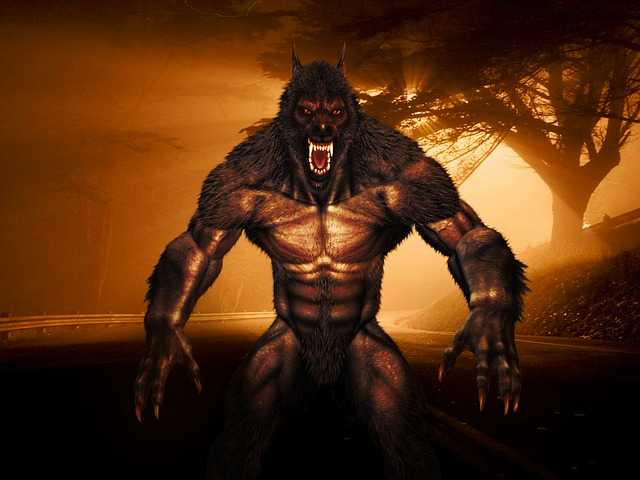The Story of Mysterious Skinwalkers
Skinwalkers are fascinating figures in Native American folklore, particularly in Navajo culture. A “Skinwalker” is a person who can transform into an animal.
However, it’s crucial to realize that Skinwalkers aren’t just mythical creatures. For the Navajo, these entities are an essential part of their spiritual belief system and have cultural significance.
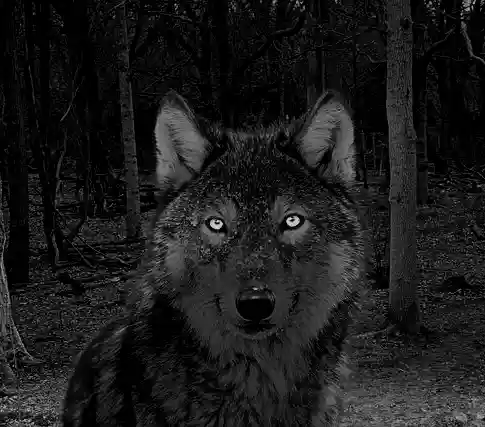
Understanding the Name: What Does Skinwalker Mean?
A Skinwalker is known in the Navajo language as “yee naaldlooshii,” which translates to “he who walks on all fours.” The term Skinwalker is a combination of two words: “skin,” which refers to the animal skins or hides used by Skinwalkers to transform, and “walker,” which refers to their ability to move or behave like the animals they transform into.
The Legend of Skinwalkers
Skinwalker’s legend is deeply ingrained in Navajo folklore. According to legend, Skinwalkers were once healers or spiritual guides who used their abilities to benefit their people. These people, however, fell from grace, using their ability for personal gain or to harm others.
Understanding the Skinwalkers legend requires delving into a realm where folklore, spirituality, and cultural beliefs intersect. To fully appreciate Skinwalker lore, respecting its sacred origins in Navajo culture is necessary.
The Shape-Shifting Process
The process of shape-shifting is central to Skinwalker folklore. But, according to Navajo legends, this transformation is a profound perversion of sacred rituals and spiritual practices, not just a physical change.
A Skinwalker is said to transform by donning the pelt of the animal they wish to imitate. This is a highly taboo act in Navajo culture. Traditional spiritual practices only permit the use of sheepskin or buckskin in rituals, and the use of predatory or harmful animal skin is strictly prohibited. A Skinwalker commits a significant cultural and spiritual violation by wearing such skins.
Transformation is more than just adopting an animal’s physical appearance. Skinwalkers are said to absorb some of the animal’s characteristics and abilities. For example, they may gain enhanced senses or speed if they become wolves. Likewise, they might be able to fly if they transform into a bird.
Despite these benefits, Skinwalkers are said to be easily identified, even in animal form. They are frequently described as looking off or unnatural. For example, a Skinwalker dressed as a dog might move awkwardly, or a Skinwalker dressed as a bird might be unusually large.
It is also said that the transformation process is reversible. This means that Skinwalkers can return to their human form whenever they want. However, their human form, like their animal form, can be marked by abnormalities. For example, according to some stories, Skinwalkers have eyes that glow unnaturally in the dark, similar to those of animals.
Overall, Skinwalker’s shape-shifting process is more than just a fantastical element of a myth. Instead, it’s a complicated jumble of spiritual rituals, cultural taboos, and symbolic transformations that reveal a rich, albeit dark, side of Navajo culture and belief systems.

Transformation and Surrendering to Evil
Transforming into a Skinwalker is considered the ultimate perversion of spiritual practices in Navajo beliefs. To become a Skinwalker, an individual must commit an awful act, usually the murder of a close family member. This act is considered the ultimate betrayal and represents the individual’s surrender to evil.
After committing this act, the individual gains the ability to shape-shift, mimicking the appearance and traits of any animal. This transformation is accomplished by wearing the skin of the desired animal, a practice frowned upon in Navajo culture. On the other hand, traditional healers only use sheepskin, buckskin, or hides from other non-predatory animals during their rituals.
Skinwalkers use their powers to cause harm once they have been transformed. They are said to manipulate other people’s thoughts, causing confusion or fear, and can even control their victims’ actions. Skinwalkers are also thought to bring illness, misfortune, or death to those they target.
Skinwalkers, like the vampire myth of European origin, are said to be unable to enter a home unless invited. Therefore, they use their persuasion skills to deceive their victims into extending an invitation or resort to terrifying tactics that cause the victim to invite them in unknowingly.
Where do Skinwalkers Live?
They’re said to live on or near the Navajo reservation, which stretches across Arizona, New Mexico, and Utah.
While the legends are most common among the Navajo, similar stories can be found in other tribes across the region. That is why stories of Skinwalkers are familiar in other parts of the Southwest or anywhere there is a significant Navajo presence.
However, it’s important to note that in Navajo culture, discussing Skinwalkers is prohibited, and such discussions are usually avoided, especially with outsiders. This is because these entities are considered evil and dangerous, and talking about them is thought to attract their attention or bring bad luck.
The location of Skinwalkers has to do with the Navajo people’s spiritual beliefs and cultural practices. In this sense, they “live” within the tribe’s cultural memory and ongoing traditions. Their “home” is both a physical location and a place within the Navajo people’s spiritual beliefs.
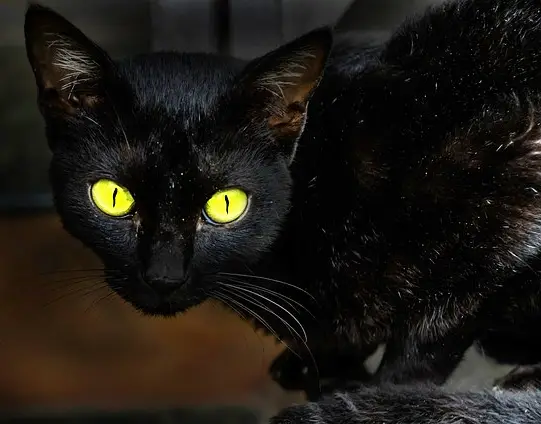
Skinwalker Abilities: What do Skinwalkers do?
These entities are frequently linked to evil actions and intentions. Here’s a closer look at what Skinwalkers are said to do:
Shape-shifting: The ability to transform into different animals is attributed to Skinwalkers. They accomplish this by wearing the pelt of the animal they wish to imitate, which is strictly forbidden in Navajo culture.
Skinwalkers are said to use their powers to cause illness and misfortune in others. They are said to be capable of cursing people, causing sickness, bad luck, or even death. They are sometimes described as witches who can cast evil spells.
Manipulating Minds: Stories of Skinwalkers frequently involve them manipulating their victims’ thoughts and actions, causing confusion, fear, and, on some accounts, even controlling their targets’ activities.
Mimicking Voices: According to some legends, Skinwalkers can perfectly imitate any voice, which they use to confuse victims, lure them away from safety, or sow discord.
Fast and agile: Skinwalkers are thought to have speed and agility far beyond that of a normal creature, especially when in animal form. They are known for covering large distances quickly and performing physically impossible feats.
Skinwalkers are described as roaming around houses, peering through windows, and causing fear and discomfort. They are said to be unable to enter a home unless invited in, similar to vampire legends.
What do Skinwalkers Look Like
The appearance of Skinwalkers varies greatly between accounts and stories, but there are some common themes.
Skinwalkers are said to be shapeshifters who can take on the appearance of various animals. For example, they may be a wolf, coyote, crow, eagle, or owl, among other animals. The animal form of a Skinwalker is said to be “off” or unnatural in many stories. For example, they could be unusually large, move strangely, or have glowing red or yellow eyes.
When a Skinwalker assumes human form, they are frequently described as looking like any other person, making identification difficult. Some accounts, however, suggest that when they are human, their eyes may glow like an animal’s when caught in the light.
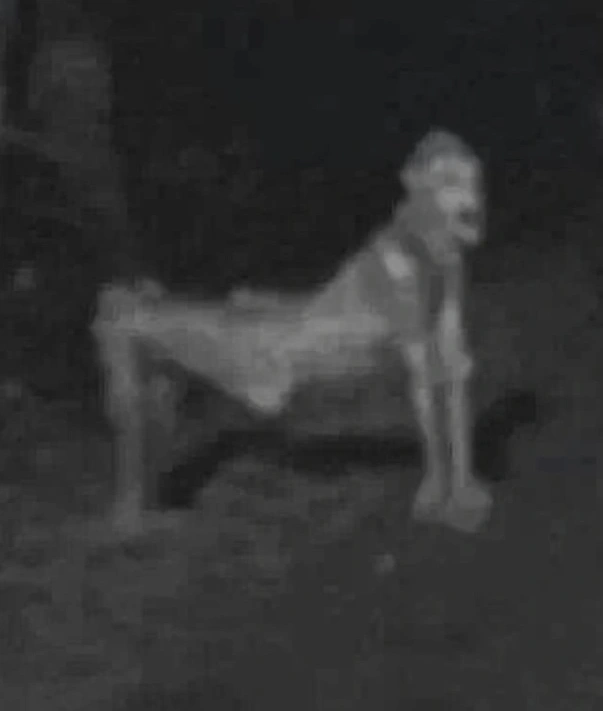
Skinwalkers are described as humanoid figures with animalistic features in other stories. For example, they may have elongated faces, a hunched stance, or claws or teeth that resemble those of animals.
It’s important to remember that these descriptions are based on oral tradition, folklore, and personal accounts, which can vary significantly between people and communities. As a result, the appearance of Skinwalkers is open to interpretation and variation.
Encounters with Skinwalkers
Encounters with Skinwalkers are frequently described as terrifying and unsettling. However, these encounters are usually shrouded in mystery and fear, with eyewitness accounts that lean on the extraordinary.
A sense of intense dread is a common theme in many Skinwalker encounters. Those who believe they have seen a Skinwalker frequently report an overwhelming sense of unease that lasts long after the event. This isn’t just about physical presence. People have reported feeling watched or sensing an evil presence even when they have not seen a physical entity.
According to one Navajo reservation account, an elderly woman came across a large, wolf-like creature that walked on its hind legs. The creature was said to have stared at her with intelligent, human-like eyes before disappearing into the darkness. The encounter, she claims, left a lingering sense of malice in the air.
Another telltale sign in Skinwalker encounters is animal behavior. Pets, in particular, appear to be highly sensitive to the presence of a Skinwalker. Animal reactions in these stories include dogs growling at empty spaces, cats staring intently at something invisible to human eyes, and horses becoming spooked for no apparent reason.
In another case, a family living near a Navajo reservation reported strange occurrences on their property. During the night, their dogs frequently growled and barked at seemingly nothing, and their horses appeared disturbed and restless.
Then, they saw a large, unidentified creature prowling around their property one night, moving in an unnatural, almost human-like manner. The beast vanished before they could get a good look at it, leaving only an eerie silence and a strong sense of unease.
Finally, Skinwalkers are said to be able to mimic human voices. This ability is frequently used to draw victims out into the open or to confuse them. A man from Arizona, for example, recalled hearing his brother calling him late at night from the woods.
The unsettling part was that his brother was thousands of miles away at the time and could not have been in those woods. However, the man later learned about Skinwalkers and their mimicry abilities, and he became convinced he’d had a close encounter with one.
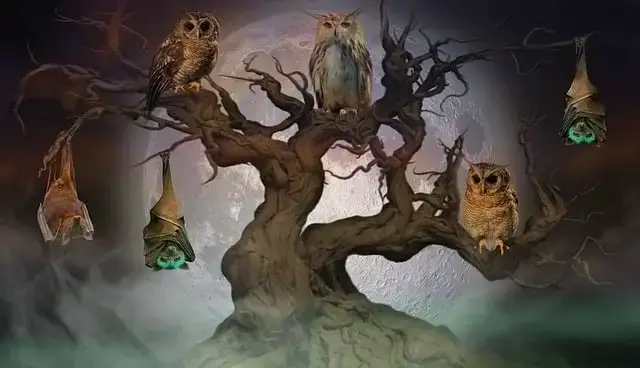
Are Skinwalkers Real?
The reality of Skinwalkers has a deep connection with cultural and personal beliefs. Skinwalkers are an essential part of the spiritual and cultural traditions of the Navajo and other tribes. They’re deeply rooted in folklore, stories, and life lessons.
However, there is currently no solid evidence to support the existence of Skinwalkers or other supernatural entities from a scientific standpoint. While numerous anecdotal reports of Skinwalker encounters have been, these cannot be proven or disproven.
It is critical to remember that not all aspects of culture and belief can or should be evaluated solely based on empirical evidence. For example, many cultural traditions worldwide include convictions in supernatural beings or events with profound spiritual or symbolic significance. These beliefs can shape a person’s perspective, influencing their actions, values, and life understanding.
Cultural Sensitivity and Respect
It’s critical to approach the subject of Skinwalkers with caution. For the Navajo, openly discussing Skinwalkers is frowned upon. However, the legends and beliefs surrounding Skinwalkers are a delicate aspect of their culture that deserves our understanding and respect.
Conclusion
Skinwalkers, based on the Navajo people’s rich folklore and spiritual beliefs, represent an intriguing blend of myth, culture, and deeply rooted spiritualism. They are not just characters from an ancient myth, but symbols of cultural values and societal norms, manifested as shape-shifting witches capable of assuming various animal forms.
The Skinwalker story is a metaphor for the perversion of sacred practices and a cautionary tale about the consequences of prioritizing personal gain over communal well-being.
While traditionally associated with Navajo culture, stories of Skinwalkers have spread far and wide, inspiring tales in other Native American tribes and generating intrigue in popular culture. Despite this, the lore remains deeply sacred and taboo among the Navajo, demonstrating the profound respect these stories are held in.
The transformation process, which is central to the Skinwalker mythos, represents grave spiritual and cultural violations. Taking on the pelt of a predatory or harmful animal means a deliberate distortion of sacred rituals, culminating in an embodiment with the power to instill fear, bring illness, or even death.
Accounts of encounters with Skinwalkers, while spine-tingling and frequently shrouded in an eerie aura of mystery, should be treated as anecdotal.
These stories, passed down through generations, often evolve with each retelling, adding to the enigmatic nature of these entities. Nonetheless, they provide an intriguing glimpse into the supernatural realm perceived by the Navajo culture.
While it is widely assumed that Skinwalkers live in the Southwestern United States, particularly near or within the Navajo reservation, their “home” extends beyond physical locations. Instead, they “live” within the Navajo people’s cultural memory and ongoing traditions as embodiments of spiritual beliefs and cultural narratives.
Whether Skinwalkers are considered “real” or not is primarily determined by one’s cultural perspectives and personal beliefs. In the absence of empirical evidence, the existence of these entities remains subjective, deeply intertwined with individuals’ and communities’ spiritual convictions.
Nonetheless, the enduring legend of Skinwalkers demonstrates the potent influence of cultural narratives in shaping perceptions of the world and influencing communal identities and values.






